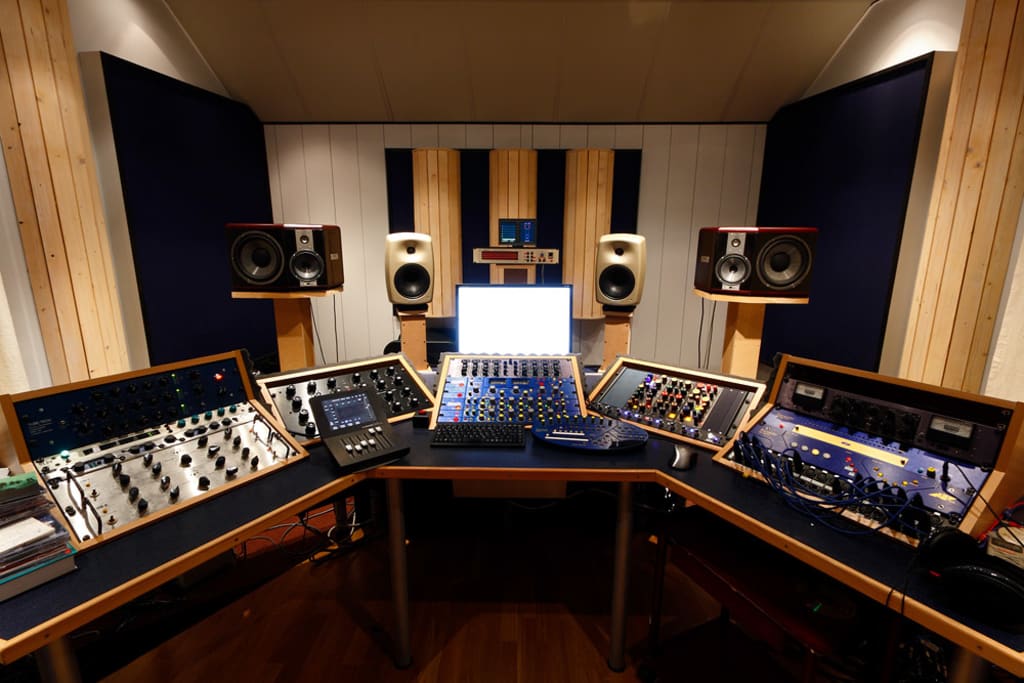Mastering Music: Essential Tips for Achieving Professional Sound"
In this article, we’ll explore essential tips for mastering music to help you achieve a professional sound

Mastering music is a critical step in the music production process that can significantly enhance the quality and impact of your tracks. It's the final touch that transforms your mix into a polished, professional-sounding product, ready for distribution. Whether you’re a beginner or a seasoned producer, understanding and applying effective mastering techniques can make a substantial difference in the outcome of your music. In this article, we’ll explore essential tips for mastering music to help you achieve a professional sound.
Understanding the Basics of Mastering
What is Mastering?
Mastering is the final step in the music production process that involves balancing the sonic elements of a stereo mix and optimizing playback across all systems and media formats. It includes fine-tuning EQ, compression, limiting, and other processes to ensure that the track sounds cohesive and professional.
Why is Mastering Important?
Mastering ensures that your music translates well on various playback systems, from high-end studio monitors to earbuds and car speakers. It gives your track the loudness, clarity, and punch needed to compete with commercially released music.
Essential Mastering Tips
1. Start with a Great Mix
A great master starts with a well-balanced mix. Before you begin the mastering process, ensure that your mix is as polished as possible. Address any issues with levels, panning, and effects in the mixing stage to make the mastering process smoother and more effective.
2. Use High-Resolution Audio Files
Always work with the highest quality audio files available. Using 24-bit or 32-bit files at the highest sample rate your system supports will give you the best sound quality and the most headroom for processing.
3. Reference Tracks
Using reference tracks is one of the most effective ways to guide your mastering process. Select professionally mastered songs in a similar genre to your music and compare your track to these references. This can help you gauge the balance, tonal characteristics, and loudness of your track relative to commercial standards.
4. Monitor on Multiple Systems
To ensure your master sounds good everywhere, listen to it on various playback systems, including studio monitors, headphones, car speakers, and even smartphone speakers. This practice helps you identify any issues that might not be apparent on your primary monitoring setup.
5. Invest in Quality Monitoring Equipment
High-quality monitors and headphones are essential for accurate sound reproduction. They allow you to hear the nuances in your track and make precise adjustments. Consider investing in well-regarded brands and models that are known for their accuracy and reliability.
6. Master EQ and Compression
Equalization (EQ) and compression are two of the most important tools in mastering. Here’s how to use them effectively:
EQ: Use EQ to balance the frequency spectrum of your track. Remove any problematic frequencies, enhance important elements, and ensure that the bass, midrange, and treble are well-balanced.
Compression: Apply compression to control the dynamic range and add punch to your track. Use a light touch to avoid squashing the dynamics too much, and consider using multiband compression for more precise control over different frequency ranges.
7. Avoid Over-Processing
One of the biggest mistakes in mastering is over-processing. Applying too much EQ, compression, or other effects can lead to a loss of dynamics and introduce unwanted artifacts. Aim for subtle adjustments that enhance the natural sound of your track without overloading it.
8. Use Limiting Wisely
A limiter is used to increase the overall loudness of your track while preventing clipping. However, it's crucial to use it wisely. Over-limiting can cause distortion and reduce the dynamic range, making your track sound flat and lifeless. Set your ceiling just below 0 dBFS and adjust the threshold to achieve the desired loudness without compromising the sound quality.
9. Apply Stereo Imaging
Stereo imaging tools can widen or narrow the stereo field of your track. Use these tools to enhance the spatial characteristics of your mix, but be careful not to overdo it. Too much stereo widening can cause phase issues and make your track sound unnatural.
10. Dithering
Dithering is the process of adding low-level noise to your track to mask quantization errors when reducing bit depth (e.g., from 24-bit to 16-bit). Always apply dithering as the final step before exporting your master to ensure the best possible sound quality.
Practical Steps in Mastering
Step 1: Prepare Your Workspace
Before you start mastering, prepare your workspace. Ensure your room is acoustically treated to reduce reflections and standing waves. Set up your monitors in an optimal listening position, forming an equilateral triangle with your head.
Step 2: Analyze Your Mix
Listen to your mix critically and take notes on any issues you hear. Use spectrum analyzers and other metering tools to get a visual representation of your track’s frequency balance and dynamic range.
Step 3: EQ Adjustments
Start by making broad EQ adjustments to balance the overall frequency spectrum. Address any problematic frequencies and enhance key elements to ensure a balanced and cohesive sound.
Step 4: Apply Compression
Apply light compression to control the dynamic range and add punch. Use a low ratio (e.g., 2:1) and adjust the threshold and attack/release settings to achieve a smooth and transparent effect.
Step 5: Fine-Tune with Multiband Compression
If needed, use multiband compression to target specific frequency ranges. This allows you to control the dynamics of the low, mid, and high frequencies independently, providing more precise control over the overall sound.
Step 6: Stereo Imaging
Adjust the stereo width of your track using stereo imaging tools. Enhance the spatial characteristics without compromising mono compatibility.
Step 7: Limiting and Loudness
Apply a limiter to increase the overall loudness of your track. Set the ceiling just below 0 dBFS and adjust the threshold to achieve the desired loudness. Use loudness meters to ensure your track meets commercial standards without excessive compression.
Step 8: Apply Dithering
As the final step, apply dithering to your master. This helps to minimize quantization errors when reducing bit depth and ensures the best possible sound quality.
Step 9: Export Your Master
Export your mastered track in the desired format, typically WAV or FLAC for lossless quality. Ensure you maintain the highest possible quality throughout the export process.
Additional Tips for Successful Mastering
1. Take Breaks
Mastering can be a tiring process. Take regular breaks to rest your ears and maintain perspective. Fresh ears are more likely to catch subtle issues that fatigued ears might miss.
2. Collaborate with Other Producers
If possible, collaborate with other producers or mastering engineers. Getting a second pair of ears can provide valuable feedback and help you achieve a better result.
3. Keep Learning
Mastering is an art that requires continuous learning and practice. Stay updated with the latest techniques, tools, and trends in the industry. Attend workshops, read articles, and watch tutorials to keep improving your skills.
4. Trust Your Ears
While tools and meters are helpful, ultimately, trust your ears. Your ears are the best judge of what sounds good, so rely on them to make the final decisions.
Conclusion:
Mastering music is a complex but rewarding process that can elevate your tracks to a professional level. By understanding the basics, using high-quality equipment, and applying essential techniques like EQ, compression, and limiting, you can achieve a polished and cohesive sound. Remember to use reference tracks, monitor on multiple systems, and avoid over-processing to maintain the natural dynamics of your music. With practice and patience, mastering can become an integral part of your music production workflow.
For more detailed insights and tips on mastering music, check out this comprehensive guide on Tips for Mastering in Music.
We'd love to hear your thoughts and experiences with mastering music. What challenges have you faced, and what techniques have you found most effective? Share your tips and join the discussion in the comments below!
About the Creator
Enjoyed the story? Support the Creator.
Subscribe for free to receive all their stories in your feed. You could also pledge your support or give them a one-off tip, letting them know you appreciate their work.






Comments (1)
Hey, just wanna let you know that this is more suitable to be posted in the Beat community 😊